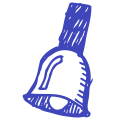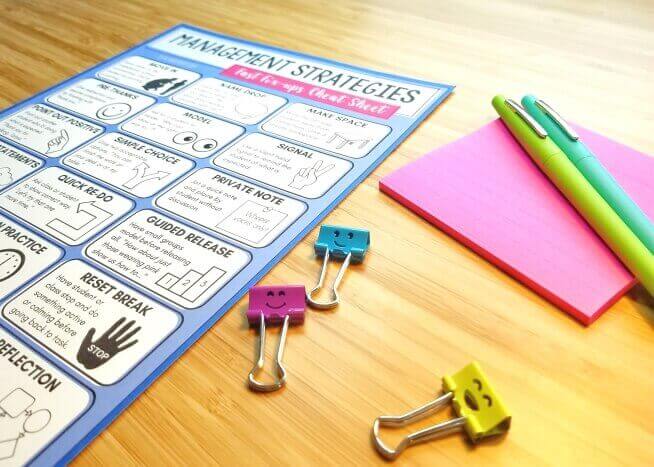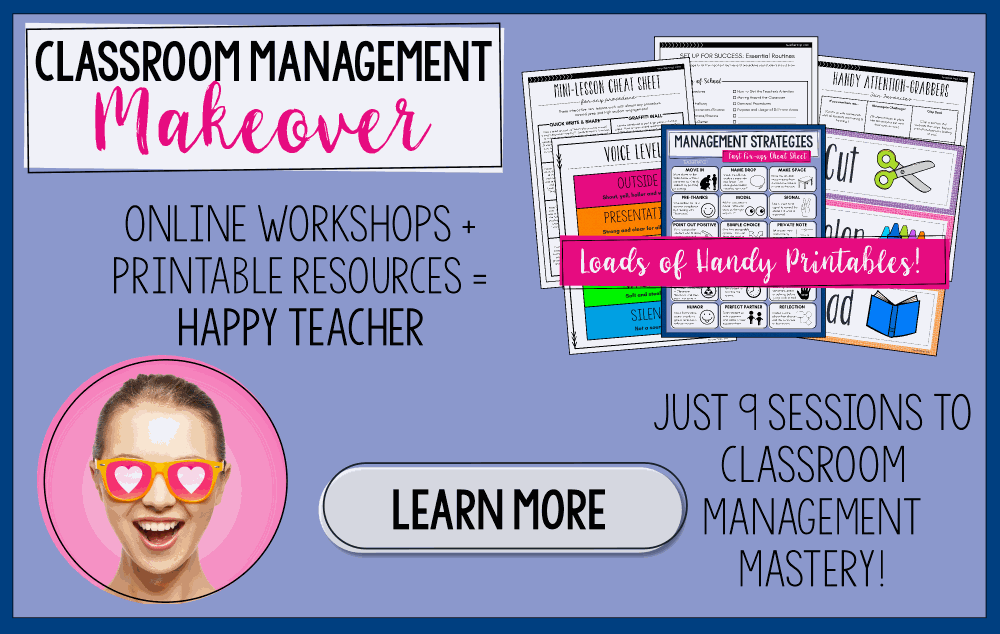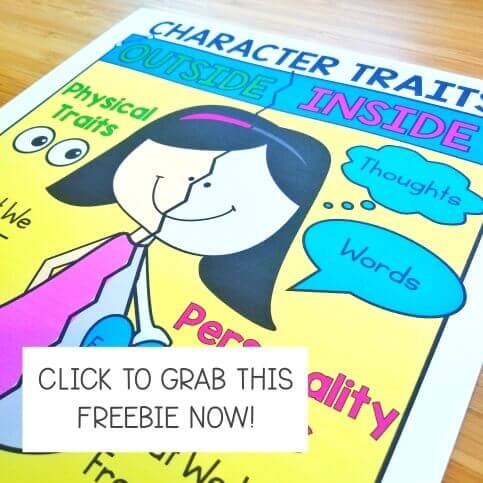After using a Behavior Clip Chart for one semester, I quickly learned that color systems and behavior charts are NOT for me. I don’t believe they’re good for children or effective in improving behavior.
In my post, I Ditched My Clip Chart, and Here’s What Happened, I shared my experience with that so-called behavior management tool and why I think behavior charts are problematic.
In this post, I want to offer 5 alternatives to behavior charts that actually lead to better student behavior.

Replace Behavior Charts with Classroom Promises
The first step in undoing the damage done by using behavior charts was rethinking how I wanted my classroom to function. I didn’t want to be the all-powerful teacher setting the rules and then punishing those who didn’t obey by publicly shaming them on behavior charts. Instead, I wanted students to take ownership of creating our learning community.
My solution came in Classroom Promises. Creating Classroom Promises is easy and the process is a powerful learning experience for all students. The goal is to come up with 3-5 shared classroom promises that all students can agree on.
You can do the process below with the whole class but I like to begin with students in small groups first before sharing out whole group.
- Form small groups of 4-5 students. Pose the following questions and allow groups time to discuss and jot down their ideas on paper or whiteboards.
- Discussion Question #1: How do you want to be treated in our classroom?
- Discussion Question #2: How do you want to FEEL in our classroom?
- Discussion Question #3: How should students behave so that we can all do our best learning?
- Top 3: Ask groups to look back at their ideas and try to choose the 3 most important ones and label them in order of importance (1, 2, 3).
- Sharing Out: Next, the teacher records ideas where all students can see (whiteboard, projected, chart paper, etc.) by going around the room and having each group share ONE of their top 3, starting with the most important.
- Combine and Summarize: As all of the ideas are gathered, look for ways to combine or summarize. For example, if one group says “no pushing” and one group says “no name-calling,” ask students how they feel about combining those ideas into one statement, such as “Be kind to each other.”
- Turn Negatives Around: If students use negative language in stating the behaviors, look for ways to turn those around into positive statements. For example, rather than “no hitting” or “no running in the school,” you could turn it around to “Make safe choices.”
Sometimes, it can be tricky to narrow it down to only 3-5 promises, and sometimes, specific students or groups can get a little hard-headed about their ideas. No worries! Just do your best to guide the class to some generally agreed upon ideas, and explain that if needed, they can always be amended in the future.
Now, you have an agreed upon list of expectations created by your own students. You can refer back to these at any time with language like, “We all agreed to be kind to one another. Does what you’re saying sound kind?”
Behavior Reflections Over Behavior Charts
Behavior charts, like color-systems and clip charts, are about bringing attention to what students are doing wrong and applying consequences, but they do very little in helping students to make better choices in the future.
One of the most powerful methods I’ve found for improving student behavior is using Behavior Reflections. I incorporate Behavior Reflections throughout the school day, both when things are going well and when they aren’t.
The beauty of using reflective thinking is that students become more aware of their behavior and can actually learn to make better decisions.
Thumbs-Up/Thumbs-Down Reflections
I use a quick thumbs-up/thumbs-down reflection after most parts of our school day. Students simply hold their hand in front of their chest and respond to my statements with a thumbs-up (for ‘YES, I did it!’), thumbs-halfway (for ‘Kinda did it’), or thumbs-down (‘I need to work on it’).
For example, after independent writing time, I might read through our expectations while students reflect with their thumbs…
- I picked a smart spot to write.
- I wrote the whole time.
- I stayed focused on my writing.
- I reread and fixed up my writing.
Students show how they did with a thumbs up/thumbs down, and then we talk for a moment about how things went. Even though there is no reward or consequence tied to the outcome, the act of reflecting helps students notice their actions and make improvements. I’ve used this strategy with K-5 and always seen awesome outcomes, much better than I did with behavior charts!
Written or Oral Reflections
I have my students reflect on their behavior and choices often. Sometimes they talk with a partner, other times we might talk as a whole class. We do weekly reflections on Fridays, and sometimes I’ll have students write individual reflections about a certain issue.
Speaking and writing about their choices give students time to think through what happened, including what went well and what could have gone better.
Ditch Behavior Charts for Class Goal-Setting
Setting goals with children helps them learn to think ahead, work toward success, and work together. When a certain classroom issue is becoming problem, I meet with the students to set a goal and create a plan for success.
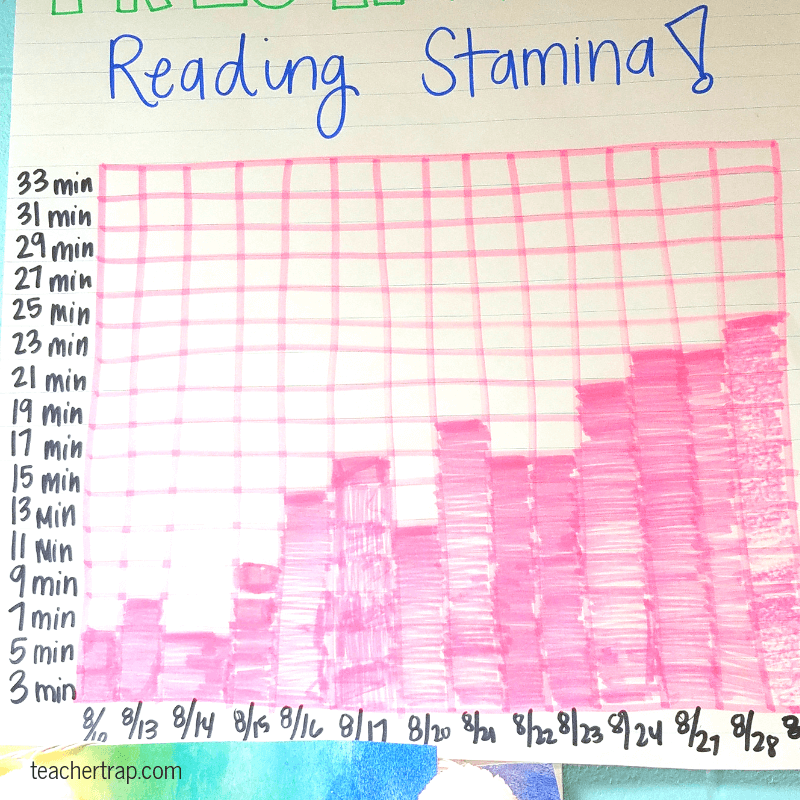
The goals can range from small to big ones. For example, at the beginning of the school year, we set a stamina goal and work together to increase the amount of time the entire class can stay focused on their independent reading. At some point, we usually have to work on “blurts” and we’ll track our progress together.
Behavior charts tend to isolate students and make them feel alone in whatever issue they are struggling with. Class goal-setting gives kids real motivation to make improvements and work as a TEAM.
Built-in Incentives Out-Perform Behavior Charts
Using built-in incentives is a strategy I mention often in the Classroom Management Makeover Course because it’s so simple, yet so effective. Behavior charts are punitive after the fact, while built-in incentives can help PREVENT problem behaviors.
With this strategy, all you do is make sure to build in little incentives to every part of your school day so that students WANT to keep those privileges.
For example, during my Writing Workshop, I allow students to sit anywhere in the classroom as long as they are focused on their writing. Some sit under tables or on desks, some want to stand while others want to lie on the ground. I explain that the choice is theirs, as long as they can be responsible with that privilege.
If a student is off-task, I’ll say something simple like, “It looks you’re having trouble staying focused where you are. Today, you’ll need to write at your desk, but you can try again tomorrow.”
This is a great incentive for students to stay focused during writing! They don’t want to be stuck at their desk or whatever spot I choose for them. The loss of that privilege is a built-in consequence that adds the extra motivation some students need to do their best.
I make sure that these types of privileges are built-in to every activity or part of the day where I know students may need that extra motivation.
Shared Problem-Solving Beats Behavior Charts
With behavior charts, I’d often find the same students clipping down for the same issues over and over. A great example of this is blurting! With one group, it seemed like the blurting out would never end, and clipping down, walking laps at recess, or losing points just didn’t make a difference.
When these kind of classroom issues arise, I find that shared problem-solving allows students to grow their ability to manage their own behavior, plus helps to build classroom community.
You can use shared problem-solving with individual students, groups of students, and as a whole class. Guide the student or group through a series of questions and facilitate a conversation around possible causes and solutions.
- What is happening?
- Why is this happening?
- What would be better?
- How can we make that happen?
Students are responsible for creating a plan, carrying it out, and then checking back in later to share how things went.
One year, I had a group of girls that were consistently bickering, being mean to each other, and hurting feelings. The counselor met with them, the principal met with them, and I did, too, but the drama continued. Finally, I kept them all in from recess one day and told them they needed to figure out a plan for how to fix this issue and had 20 minutes to do so. Then I put on headphones, and worked at my desk.
About ten minutes later, they waved me over. The five girls had come up with a detailed plan that included being in charge of giving compliments, not only to each other, but to the other girls in the class, passing out positive notes each morning, and organizing a girls’ activity at recess each day. It was better than anything I could have come up with on my own, and to my surprise, it worked! The drama finally ceased!
Logical Consequences Work Better Than Behavior Charts
Behavior charts don’t really make any sense. One student clips down because she ran in the hallway, another clips down because he forgot his homework. The different “errors” all have the same consequences regardless of why they happened, and the punishment is applied by an outside force.
Logical consequences, on the other hand, are about helping kids understand the natural outcomes of certain choices while also recognizing their own role in creating that outcome.
I’ve heard “logical consequences” be described as “making the punishment fit the crime.” I’m not a fan of that explanation though. I think of logical consequences as more of a “here’s what you need to learn and practice” or “this behavior leads to this outcome.”
My logical consequences are often connected to the incentives I’ve built-in (as mentioned above). I want students to understand that if they are having a hard time doing something as expected, we’ll have to find another way.
Let’s say all the kids are working at their group tables, but one student is being loud and silly. I typically give a reminder or warning first. If the behavior continues, I’d then walk over and privately say, “It looks like you’re having a hard time completing your work here with the group. Go ahead and move over to the quiet table so you can concentrate.” I say it with kindness and then let the student feel the effects of his choices.
In reality, it’s still a form of punishment, but because of the positive delivery and clear connection to his behavior, I find students are more able to make sense of how their choices lead to the outcome.
I’ve created a Logical Consequences Cheat Sheet that can be used as a handy reference tool. You can download it for FREE in my TPT Store.
Classroom Management Makeover
My Classroom Management Makeover Course is packed with strategies like these and other innovative ways to create a classroom where students are responsible for their behavior and play a meaningful role in solving problems.
Teachers shouldn’t have to spend their days playing behavior police. We shouldn’t have to feel stressed and overwhelmed about student behavior.
Here’s what Kebra, an elementary school teacher, had to say about the online course:
“I’m currently working through the Classroom Management Makeover and it’s so worth it! I’ve been teaching for four years and classroom management has become more challenging! This is a super amazing tool that gives you resources and different ways of thinking about management. I’m in LOVE with it and actually excited to get back to school after ending my last year on a very sour note!”


